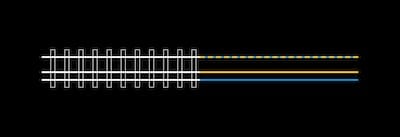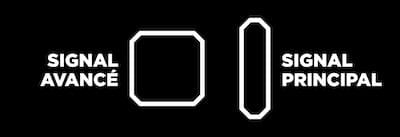THE RAILS

The Swiss Vapeur Parc circuit allows you to ride on trains that use two different rail gauges:
5 inches (127 mm)
7 1/4 inches (184 mm)

The axles allow trains to run on the tracks. They are composed of an axis (1), allowing the two wheels to be held together, of a tire (2), an area where the axle is in contact with the rail and a wheel flange (3), that acts as a guide to keep the axle on the track




THE SWTCH
Switches allow trains to change direction. They are all custom built by our mechanic.
Step 1: The train, guided by the wheel flange, will go straight on the rails marked in green.
Step 2: The train will turn left following the path marked in green.
The blades are operated by compressed air and an actuator. Switches must be regularly cleaned, oiled, greased and maintained to ensure that they work properly as a whole.



SECURITY SYSTEMS

There are a multitude of signals regulating rail traffic. The signals used at the Swiss Vapeur Parc are modeled on the real life signalls and are fully functional. It regulates traffic and indicates the position of the switches.

“Signal images” indicate the positioning and colour of the lights on a signal. All signal images must be known and remembered to be able to drive on the circuit. They give drivers real-time information about speed, steering and track occupancy.
DOMINO INTEGRA

There are two ways to control trains manually on our network; The computer of a director’s post (kind of control tower giving access to the entire circuit with a single click) and the Domino Integra, dating from the 1960s, control desks generally representing the stations. On the animation shown above, one can observe the different stages of a train entering Leysin station. The white dotted areas represent a reserved and blocked section destined to be used by an approaching train. In red, the section is occupied by the train. The two small flashing white lines allow you to know the position of the switch, although it is not secured with compressed air. Once the route is recorded, the line stops flashing. The signal goes green and the train can enter the station.
